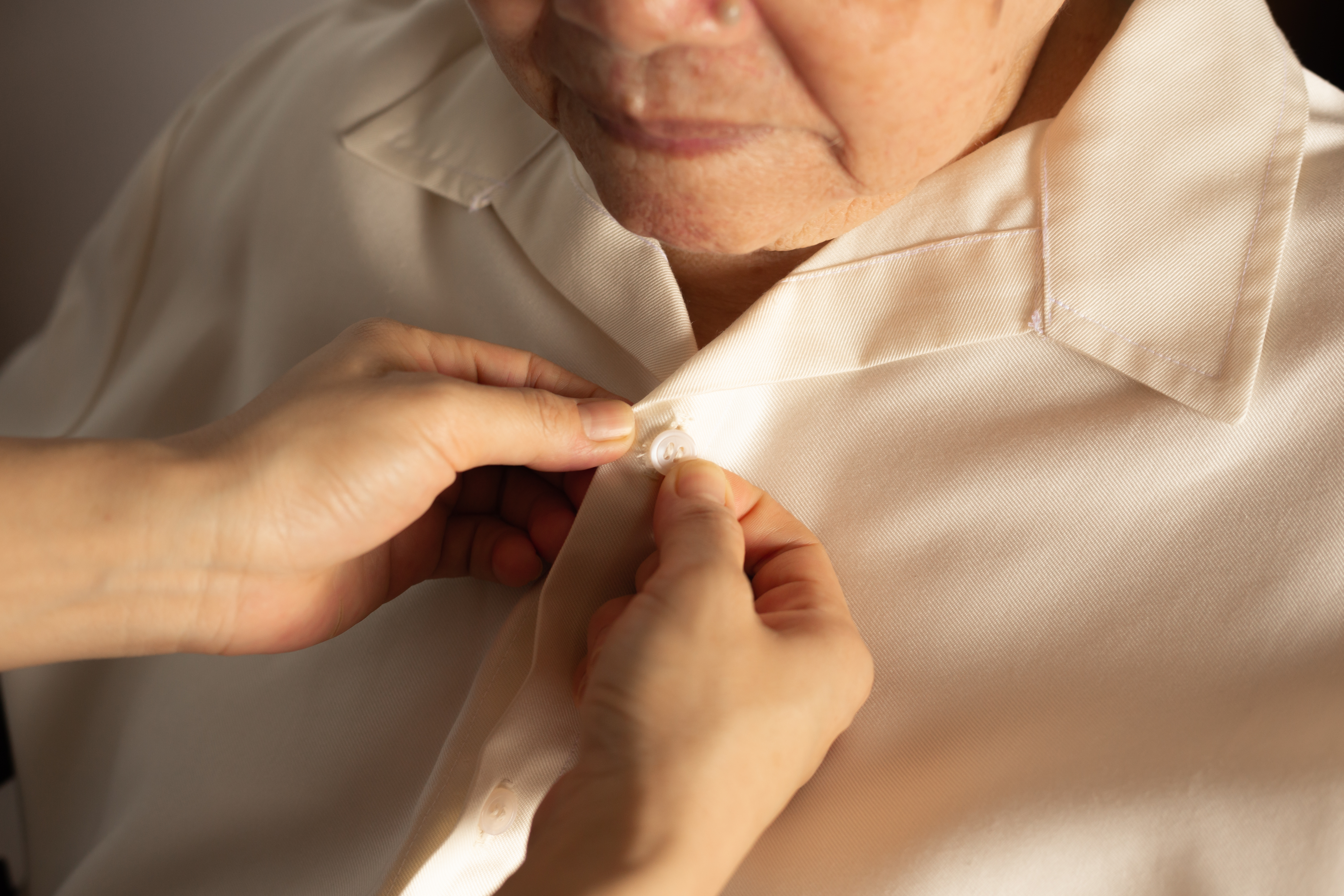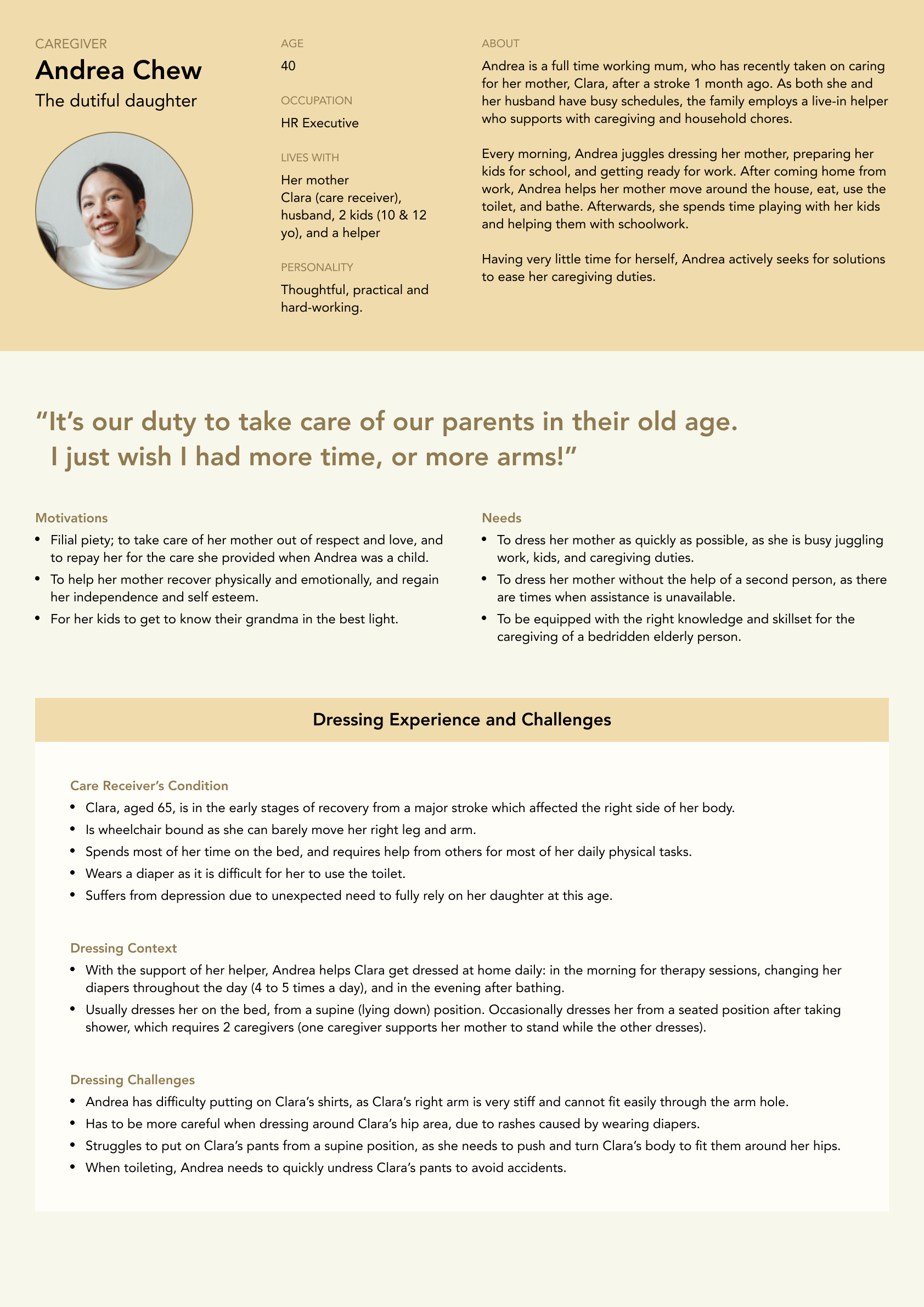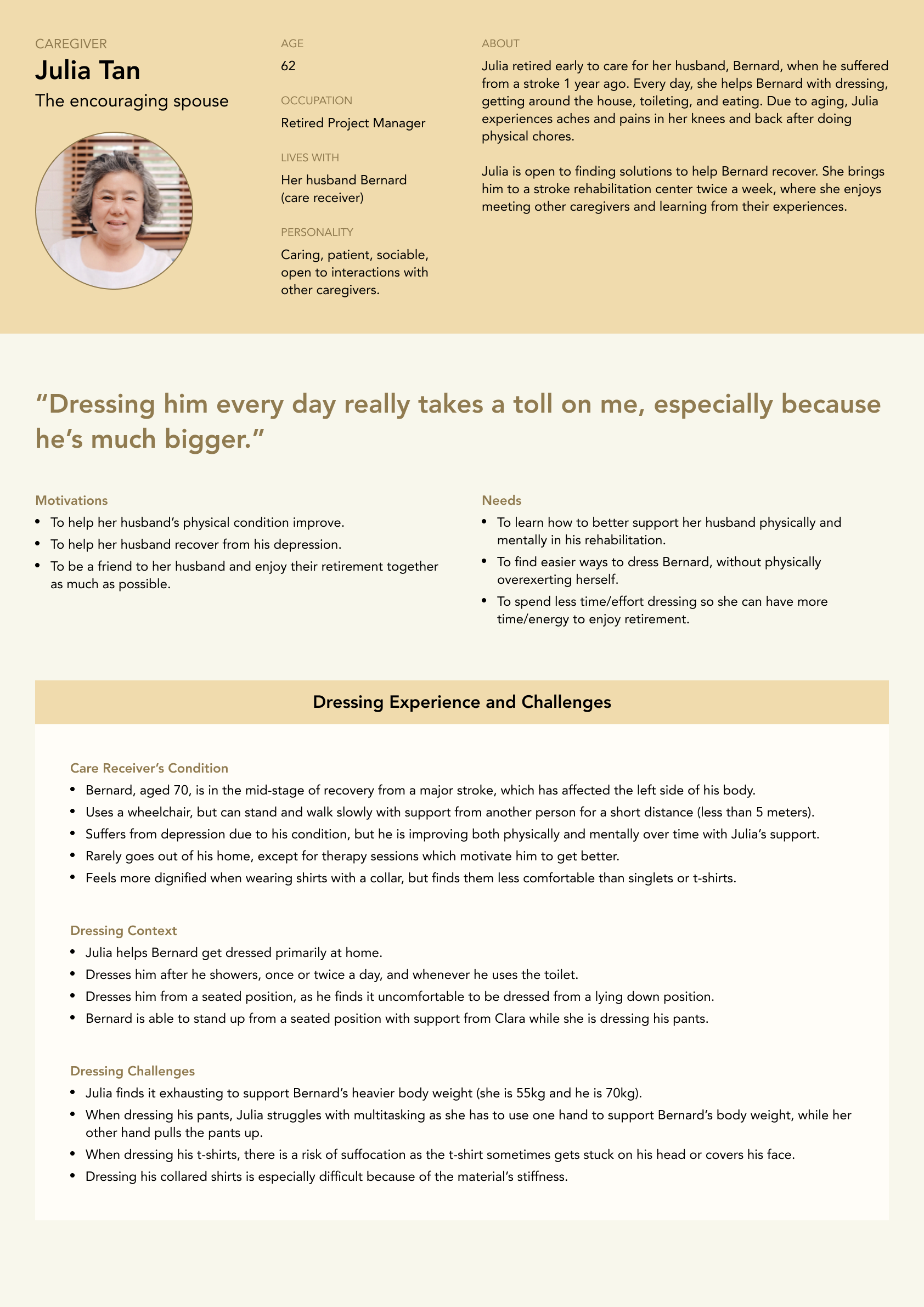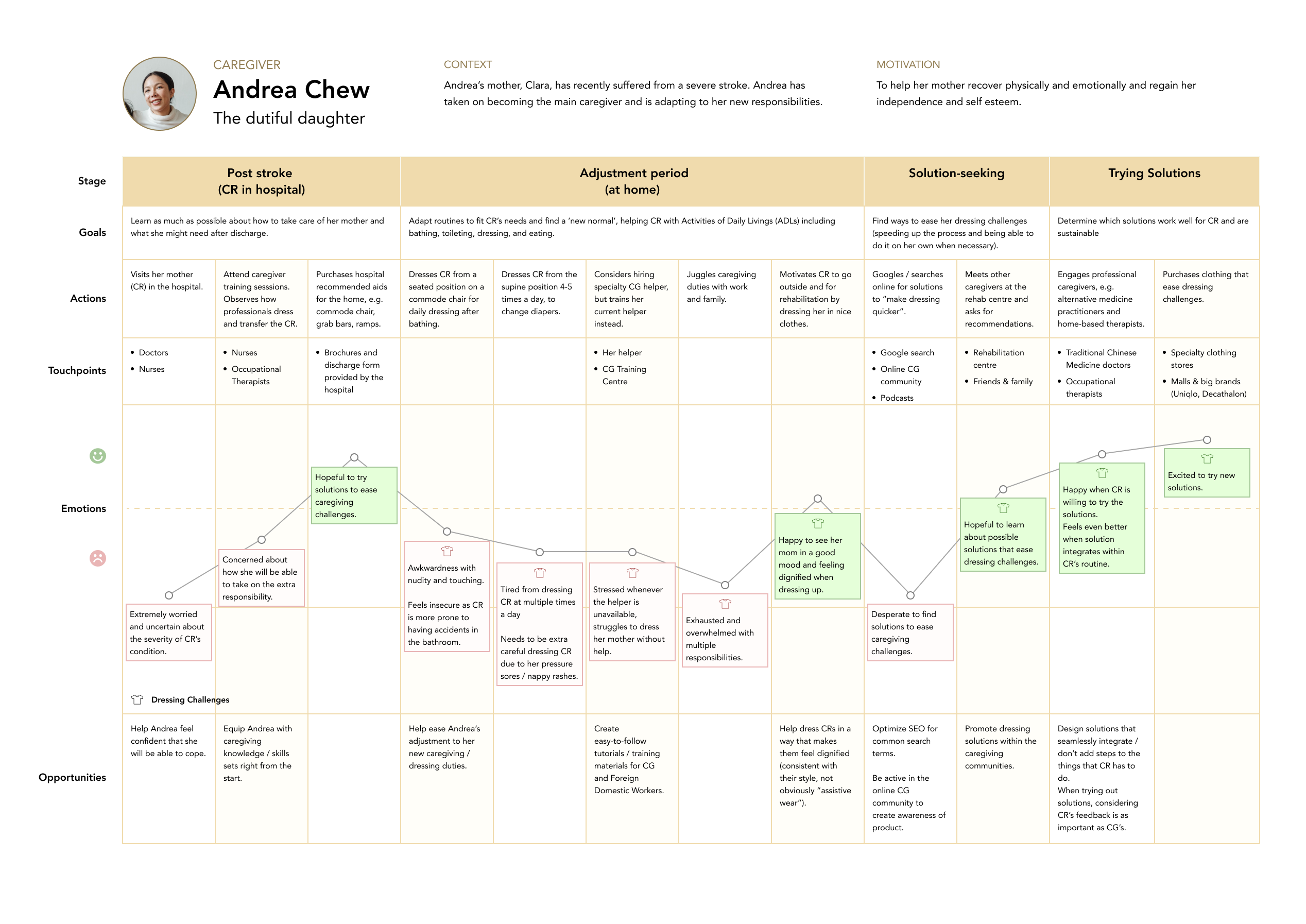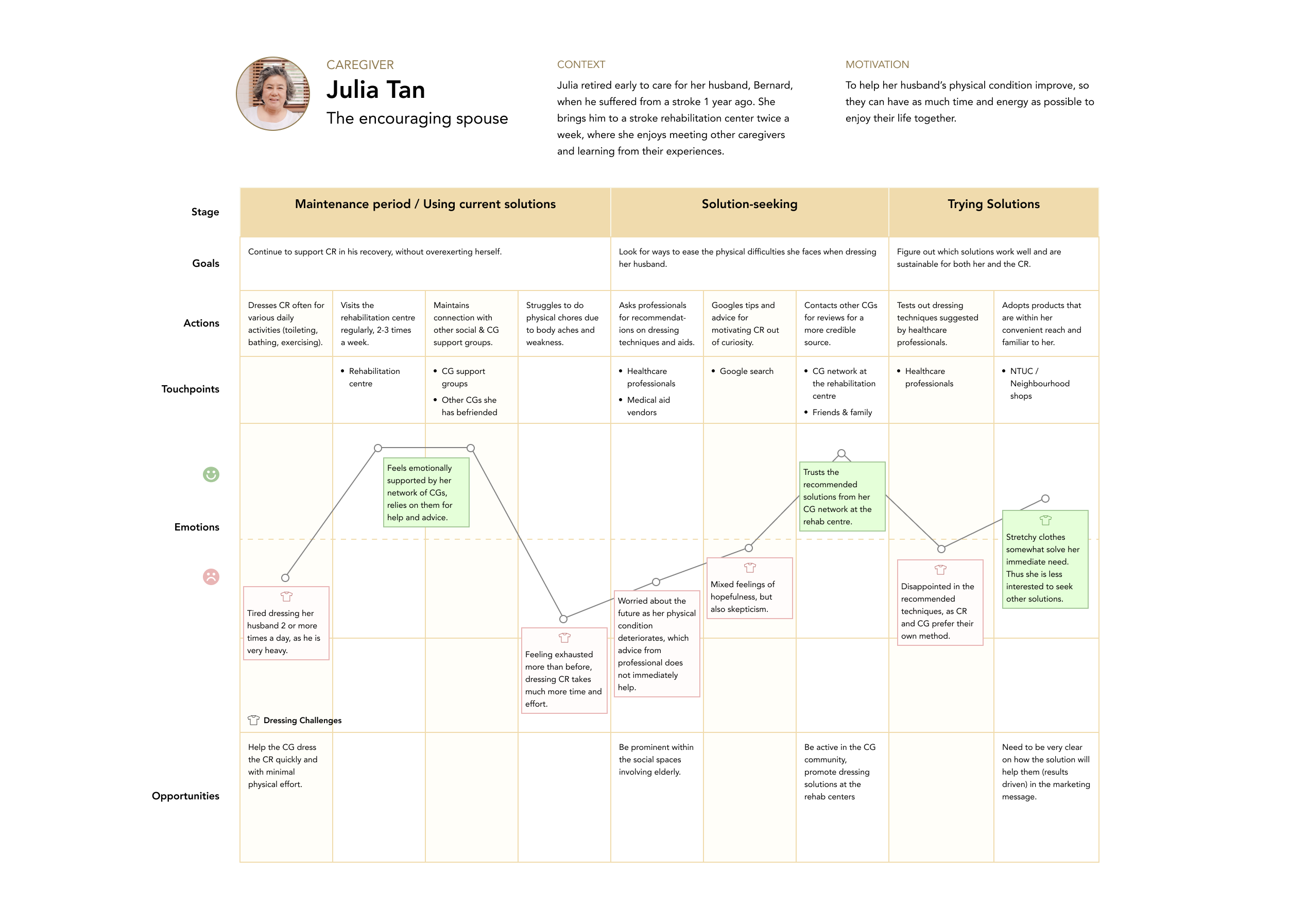Project Brief
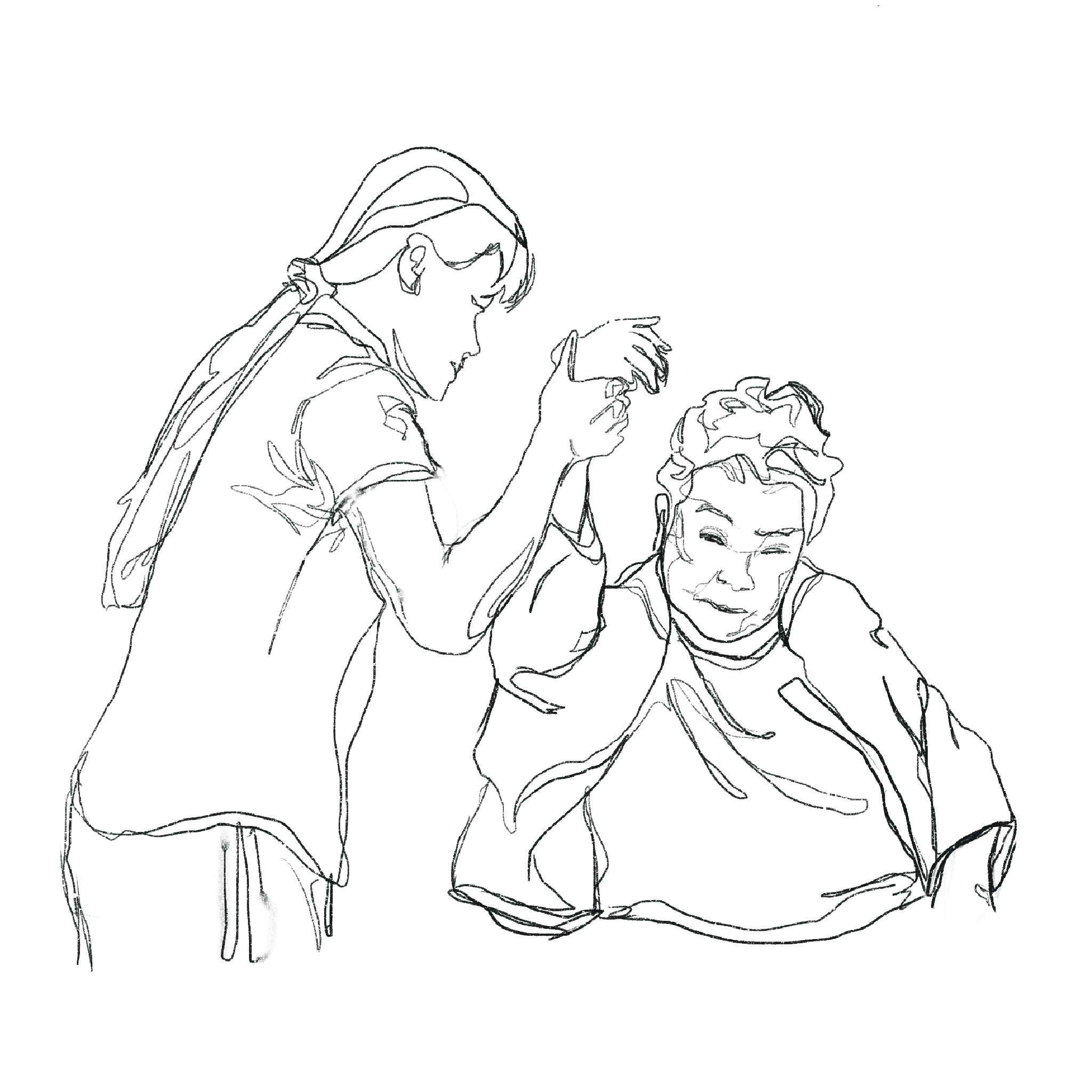
User Research Plan
We started with creating the initial problem statement: “How might we enable caregivers (CGs) of people who are bedridden, to dress their care receivers (CRs) quickly and easily?”
To answer and refine that statement, we conducted research to understand caregiving and the elderly population in Singapore, before guiding our client to decide on the specific target users and challenges to focus on. To ensure that we are solving the right problem for the right people, we also planned to create user personas and user journey maps based on all our research findings.
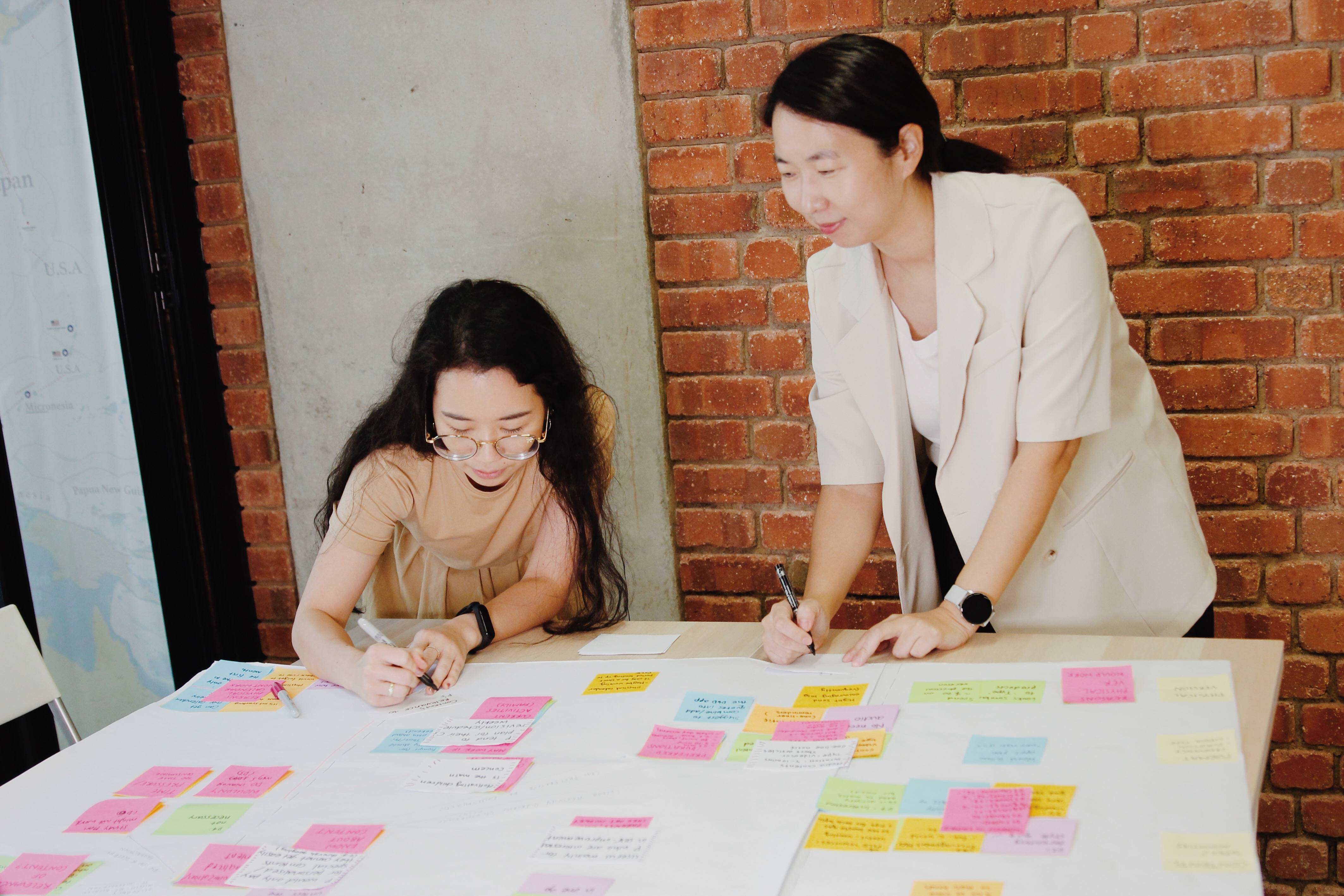
Secondary Research
Due to the Circuit Breaker (preventive measures against COVID-19 in Singapore), we decided to conduct extensive desk research before initiating any in-person interviews as we were not allowed to meet in person. Some of our findings include:
- The majority of caregivers in Singapore were informal, or family caregivers.
- In 2011, 60% of informal caregivers were aged 40 - 59 years.
- About a decade ago, the most prevalent age range for caregivers was 50-59 years.
We noted that not only has the number of informal caregivers been increasing, but also the average age of these caregivers. This was in part due to Singapore’s social policy of "family as the first line of support", and also due to the rapidly ageing population. As there are many different types of caregivers within this informal caregiver group, we needed to do some primary research to uncover deeper insights on their unique challenges.
Bodystorming
We planned to speak with caregivers of elderly CRs, but considering that these groups were at higher risk of Covid-19, and were less comfortable with remote/online interviews, we decided to run body storming sessions while continuing recruitment efforts in the background.
Bodystorming is a research activity used to understand the users’ viewpoint. A combination of role-play and simulation, it allows us to step into the shoes of our target users by re-enacting their roles, and is a great tool for empathy. In our own homes and with the help of a partner, our team members and client acted out tasks as a caregiver helping to dress a CR. Through replicating their limitations and context, the activity gave us invaluable insights into some of the specific challenges that CGs and CRs may face during dressing, such as the need to repeatedly rotate CR’s body when putting their pants on, as well as insights into how they feel.
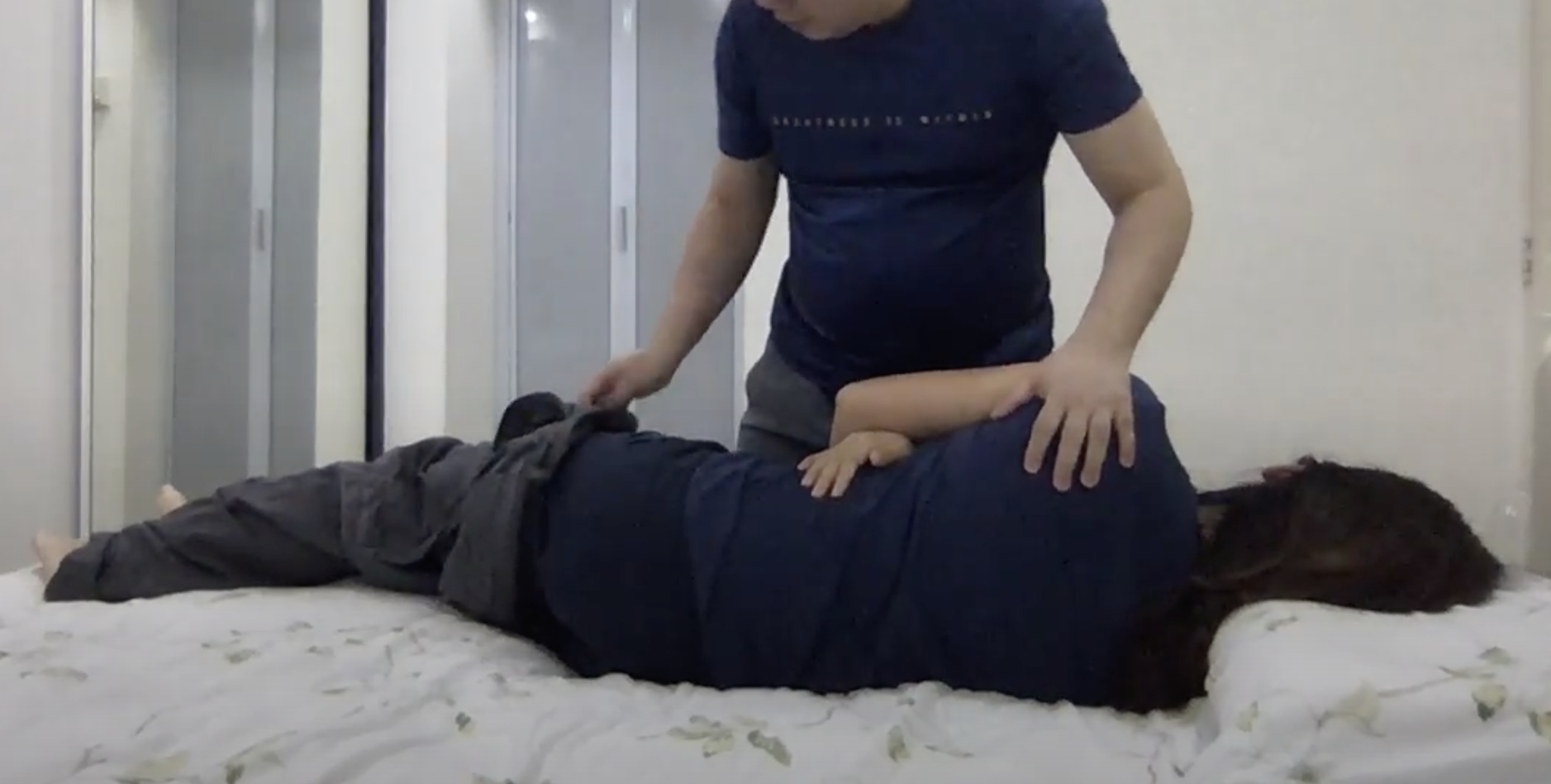
User Interviews
After the end of Circuit Breaker, we were able to conduct interviews with several CGs. This allowed us to ask questions that we weren’t able to answer through bodystorming, such as how caregiving affects their lives, and what their daily contextual challenges were. Through thematic analyses, we found interesting patterns in the types of challenges that caregivers face. We posited that the two key factors differentiating their dressing challenges were:
- Degree of CR’s physical limitations
- Availability of secondary caregiver (usually by employing a foreign domestic worker)
Additionally, we discovered some of the solutions the CGs found on their own, such as specialised clothing and new techniques of putting on CR’s clothes. Ultimately, we were able to dig deeper to understand their motivations, expectations, and behaviour. This helped us understand their user needs, and we were able to create persona cards and user journey maps.
Refining the Problem Statement
From each research activity, we were able to refine our problem statement, as well as identify more specific and solvable design challenges. Our design principles to guide the prototyping process was also documented for our client.
We wrapped up this phase of collaboration with the prototyping stage as part of the human-centered design process. We continued our partnership into the next phase to provide our services as their UX design partner.
